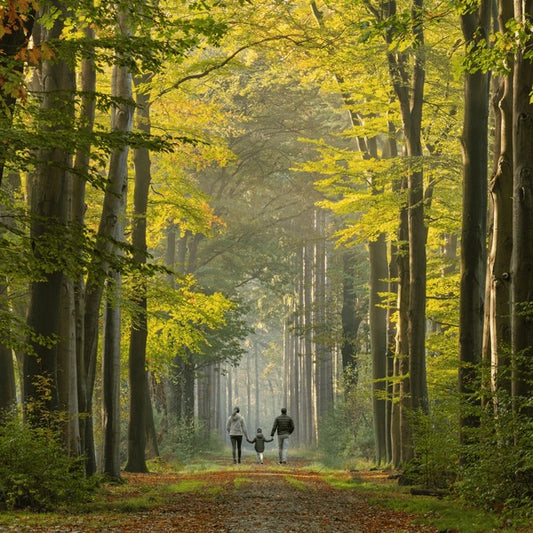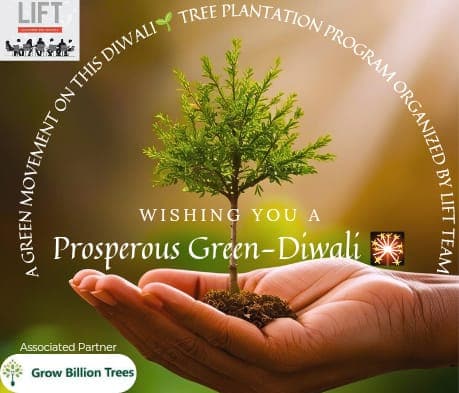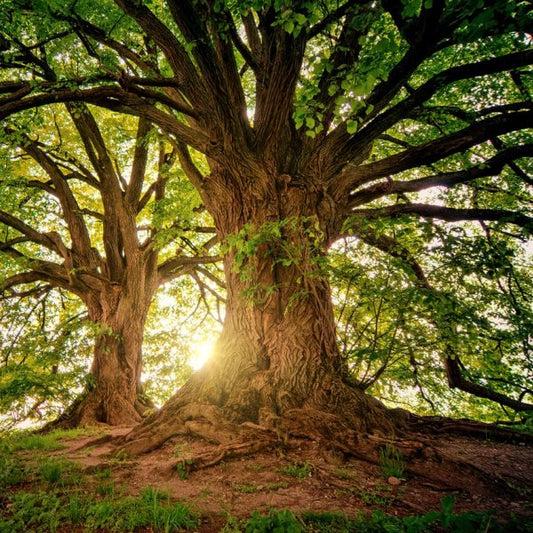

When it comes to fast-growing trees with global notoriety, the Tree of Heaven (scientific name: Ailanthus altissima)—locally known in parts of India as Maharukh or Maharun—stands tall, both literally and metaphorically. From ancient Chinese medicine Read more
Trending
Trees for Corporates
Tree of Heaven (Maharukh): The Captivatingly Controversial Tree 🌳
When it comes to fast-growing trees with global notoriety, the Tree of Heaven (scientific name: Ailanthus altissima)—locally known in parts of India as Maharukh or Maharun—stands tall, both literally and metaphorically. From ancient Chinese medicine to modern urban landscaping, this tree has journeyed continents and stirred contrasting opinions.
In this article, we’ll explore everything you need to know about this misunderstood marvel: its scientific profile, historical journey, environmental impact, cultural references, and why it's both praised and feared worldwide.
🔍 Quick Facts About Tree of Heaven
-
Common Names: Tree of Heaven, Maharukh, Chinese Sumac, Ailanthus
-
Scientific Name: Ailanthus altissima
-
Family: Simaroubaceae
-
Native To: China and Taiwan
-
Introduced In: Europe, North America, and parts of India
-
Lifespan: Up to 50 years (short-lived compared to native hardwoods)
-
Height: Can grow up to 70–80 feet (21–25 meters)
🌿 Botanical Description
Ailanthus altissima is a deciduous tree that grows with extraordinary speed—some saplings can grow over 3 feet (1 meter) in a single growing season. Its bark resembles cantaloupe rind and its pinnately compound leaves can grow up to 1 meter long.
The leaves contain several leaflets, sometimes over 20, with a strong odor (often compared to rancid peanut butter) when crushed.
Flowers: Small, greenish-yellow, and bloom in clusters.
Fruit: Winged samaras, often reddish-brown, dispersed by wind.
🌍 Environmental Impact: Blessing or Invasion?
The Tree of Heaven is polarizing. Here's why.
✅ Environmental Benefits
-
Carbon Sequestration: Due to its fast growth, A. altissima absorbs CO₂ quickly. One mature tree can sequester up to 21.5 kg of CO₂ per year.
-
Pollution Tolerance: Its roots stabilize soil in degraded urban areas and brownfields.
-
Erosion Control: Grows effectively on slopes, preventing erosion.
-
Biodiversity Support: In its native range, it provides habitat for various insects and birds.
❌ Ecological Concerns
However, in non-native areas (such as North America and parts of India), it's considered invasive:
-
Releases allelopathic chemicals into the soil that inhibit growth of nearby plants.
-
Outcompetes native species due to rapid propagation via root suckers.
-
Difficult to eradicate once established; cutting triggers more aggressive growth.
-
Acts as a host to Spotted Lanternfly (Lycorma delicatula), a serious agricultural pest.
🛑 In fact, it's banned or discouraged in several U.S. states due to ecological disruption.
📜 Historical and Cultural Significance
🌏 Origin in Traditional Chinese Medicine
In its native China, Ailanthus altissima has been used for over 2000 years in Traditional Chinese Medicine (TCM). The bark (known as chun pi) is used for:
-
Treating diarrhea
-
Parasite removal
-
Skin diseases
-
Gynecological conditions
The name "Tree of Heaven" is said to come from its ability to grow so rapidly toward the sky, symbolizing ambition and eternal ascent in Taoist beliefs.
🇮🇳 Maharukh in Indian Context
In India, the tree goes by various regional names like Maharukh, Aralu, and Chandishpatra. It was introduced during colonial times for:
-
Shade plantations
-
Roadside greening
-
Timber
In Ayurveda, the tree’s bark and leaves are believed to have anti-inflammatory and antimicrobial properties, although its use is limited due to toxicity concerns.
⚒️ Timber and Commercial Use
Despite its invasive tag, Tree of Heaven wood has commercial uses:
-
Lightweight wood: Used in packing cases, match splints, and cheap furniture.
-
Fuelwood: Burns well, though quickly.
-
Pulp: Once used for low-grade paper manufacturing.
-
Urban Forestry: Planted for shade, although now discouraged in some areas due to invasive behavior.
It’s important to note that its wood lacks durability and isn’t favored for construction.
😲 Fun & Surprising Facts
-
Book Fame: Immortalized in the 1943 classic A Tree Grows in Brooklyn by Betty Smith.
-
Explosive Growth: Some saplings have been observed to grow 3–4 meters in just one year under favorable conditions!
-
Smelly Secret: Nicknamed "Stink Tree" in the U.S. due to its pungent leaf odor.
-
Hydraulic Power: Its roots can break through concrete and plumbing lines!
-
Spiritual Symbolism: In Taoist beliefs, it represents immortality and ascension.
🧪 Scientific Research & Toxicity
Ailanthone, a quassinoid compound found in its bark and leaves, is responsible for the plant’s allelopathic and insecticidal properties. Research has explored its potential in:
-
Bioherbicides
-
Natural insect repellents
-
Anti-cancer compounds (ongoing studies in China)
However, all parts of the tree are mildly toxic to humans and animals if ingested in large quantities.
🌱 How It Spreads
The Tree of Heaven reproduces via both seeds and root suckers. A mature female tree can produce up to 300,000 seeds annually!
It’s this aggressive spread that makes it hard to control. Cutting it back often leads to more sucker growth, making mechanical removal ineffective unless roots are treated with herbicide.
🏙️ Role in Urban Landscapes
Despite its controversies, Ailanthus altissima thrives in urban settings:
-
Resistant to heat islands
-
Survives on roadsides, railway lines, and construction sites
-
One of the few trees that can establish itself in cement cracks!
Yet, modern urban forestry is shifting to using native, non-invasive alternatives like Neem (Azadirachta indica), Peepal (Ficus religiosa), or Arjuna (Terminalia arjuna).
🌏 Global Status and Conservation Concerns
In China and some parts of Southeast Asia, the Tree of Heaven is protected and even cultivated. However, elsewhere, it's viewed as a threat.
-
USA: Listed as an invasive species in 30+ states.
-
Australia: Declared a noxious weed.
-
Europe: Controlled through environmental regulations in places like Germany and Italy.
In India, though it’s not yet classified as invasive at a national level, environmentalists warn against its unmonitored planting in biodiversity-rich zones.
✅ Ideal Use Cases (With Caution)
If you're considering planting Maharukh, it’s best suited for:
-
Industrial zones
-
Mining land reclamation
-
Roadside greening (with strict containment)
-
Controlled agroforestry experiments
Avoid planting it near:
-
Homes or foundations (due to root damage)
-
Native forest zones
-
Water bodies (can crowd out aquatic edge species)
🌐 SEO Keywords to Rank With
If you’re creating digital content around this topic, here are key SEO terms to include:
-
Tree of Heaven
-
Maharukh tree benefits
-
Ailanthus altissima invasive
-
Fast-growing trees India
-
Urban landscaping trees
-
Pollution tolerant trees
-
Trees with medicinal value
-
Trees banned in USA
-
Tree of Heaven India
📌 Final Thoughts
The Tree of Heaven, or Maharukh, is a fascinating example of how nature defies boundaries—both literally and metaphorically. Its incredible ability to thrive under adverse conditions showcases resilience, but that same resilience can turn problematic in delicate ecosystems.
🌱 As we build greener cities and aim for sustainable landscapes, it's essential to balance functionality with ecological harmony. Native species, though slower to grow, often provide far more long-term benefits than exotic trees with aggressive tendencies.
So next time you spot a lanky, leafy giant pushing through a sidewalk crack, give it a second look—it might just be the Tree of Heaven asserting its unstoppable presence.
Tree of Heaven identification
Look for tall trunks, long feather-like leaves, and a sharp, burnt peanut butter smell. It grows aggressively in odd places—even out of walls or sidewalks—making it hard to miss.
Maharukh medicinal uses
Traditionally used in Chinese and Ayurvedic medicine for skin issues and digestion. But it's a risky healer—mildly toxic if misused, so not your average herbal tea.
Ailanthus altissima facts
Native to China but now global, this tree grows ridiculously fast and breaks concrete like it’s paper. It’s both admired and banned—depending on which side of the planet you’re on.
Invasive species in India
Maharukh is part of the invasive gang disrupting local ecosystems. It spreads fast, outcompetes native trees, and is a real headache for conservationists.
Tree of Heaven root system
Its roots are like underground warriors—aggressive, far-reaching, and nearly impossible to eliminate. Cut it once, and ten more shoots rise.
Tree of Heaven vs Neem
Neem is the noble healer; Maharukh is the wild sprinter. One purifies and heals, the other just takes over the neighborhood.
Air pollution tolerant trees
Maharukh thrives in polluted urban chaos where most plants struggle. It’s tough, adaptable, and oddly comfortable in grime.
Fast growing trees India
Need instant shade? Maharukh and a few others shoot up like rockets. Just be sure to choose wisely—speed sometimes comes with baggage.
Tree of Heaven smell
The leaves release a smell often compared to spoiled cashews or burnt rubber. Once you smell it, you never forget it.
Maharukh wood uses
Lightweight and soft, used for packing boxes, matches, and fuel. Functional, not fancy—think budget wood, not teak.
Tree of Heaven reproduction
It multiplies like a gossip thread—fast and everywhere. Between seeds and root suckers, it’s nearly unstoppable.
Tree of Heaven symbolism
Once a symbol of immortality in China, now a metaphor for resilience or rebellion—depending on whether you’re a poet or a city planner.
FAQ
What is the Tree of Heaven and why is it called Maharukh?
It’s a fast-growing deciduous tree known scientifically as Ailanthus altissima. Native to China, it earned the divine nickname for its skyward reach. In India, it's dubbed Maharukh, which loosely translates to "royal tree"—though it behaves more like a rebellious prince than a calm monarch.
Is the Tree of Heaven good or bad for the environment?
It’s a double-edged leaf! On one hand, it survives pollution, grows fast, and stabilizes soil. On the other, it outcompetes native plants, releases growth-inhibiting chemicals, and is a nightmare to remove. It's the kind of guest that comes for tea and takes over your house.
Why does the Tree of Heaven smell so bad?
That unforgettable funk comes from its crushed leaves and male flowers. Some say it smells like rancid peanut butter or old gym socks. It’s nature’s way of saying, “Love me or loathe me, you’ll remember me.”
Is the Tree of Heaven really invasive?
Absolutely. It spreads aggressively through seeds and root suckers like it’s auditioning for a sequel to “The Blob.” Once it moves in, good luck kicking it out. It’s banned or discouraged in many countries for this very reason.
Can I grow a Tree of Heaven in my garden?
Probably not. It grows fast, smells odd, damages sidewalks, and refuses to die quietly. Go for something more well-behaved like Neem or Peepal unless you enjoy high-maintenance greenery.
What are the medicinal uses of Maharukh?
In traditional Chinese medicine and Ayurveda, it’s used to treat digestion issues, skin conditions, and parasites. But it's mildly toxic and not your average DIY herb. Think twice before you brew—it’s not your friendly neighborhood tulsi.
How can I identify the Tree of Heaven?
Look for large compound leaves with 10–41 leaflets, a foul smell when crushed, and bark that resembles stretched-out cantaloupe. It also grows like it’s got something to prove—rapidly and everywhere.
Does the Tree of Heaven damage buildings?
Oh yes. Its roots are concrete-cracking champions. They sneak into foundations, plumbing, and sidewalks, causing structural nightmares. If your building creaks and a tree is nearby, this drama king could be the culprit.
Is the Tree of Heaven good for air pollution control?
Surprisingly, yes. It’s one of those scrappy survivors that flourishes in smog-filled cities. While it’s not winning any beauty pageants, it does a decent job sucking up CO₂ and shrugging off grime.
How fast does Maharukh grow?
Blink and it’s taller. Saplings can grow over 3 feet in a single season. If patience isn’t your thing and you want shade, it’ll impress—just don’t expect it to stop growing on command.
What are the uses of Tree of Heaven wood?
It’s the fast food of timber—cheap, light, and convenient. Used in packing crates, matchsticks, and fuel. Great for short-term use, but don’t build your dream home with it unless you want a structural mid-life crisis.
Why is the Tree of Heaven banned in some countries?
Because it's a botanical troublemaker. It reproduces too easily, kills neighboring plants, damages infrastructure, and shelters pests like the Spotted Lanternfly. Invasiveness plus smell equals an official “thanks, but no thanks” from many regions.
Most Popular
Connect with us
-
👥 Corporates
If you are looking for:
- 🌲 Tree Plantation Events
- 📊 CSR Projects
📧 corporate@growbilliontrees.com
📞 +91 9699723523
💬 +91 9325931304 WhatsApp (Only)
🕒 Mon - Sat | 10am - 7pm IST
-
🧩 Tree Plantation NGOs
If you are looking for:
- 💰 Financial Assistance
- 🤝 Operational Support
📧 support@growbilliontrees.com
📞 +91 9699723523
💬 +91 9325931304 WhatsApp (Only)
🕒 Mon - Sat | 10am - 7pm IST
-
🌼 Individuals
If you are looking for:
- 👥 Group Tree Plantation Drive
- 🌳 Bulk Tree Plantation
📞 +91 9699723523
💬 +91 9325931304 WhatsApp (Only)
🕒 Mon - Sat | 10am - 7pm IST











